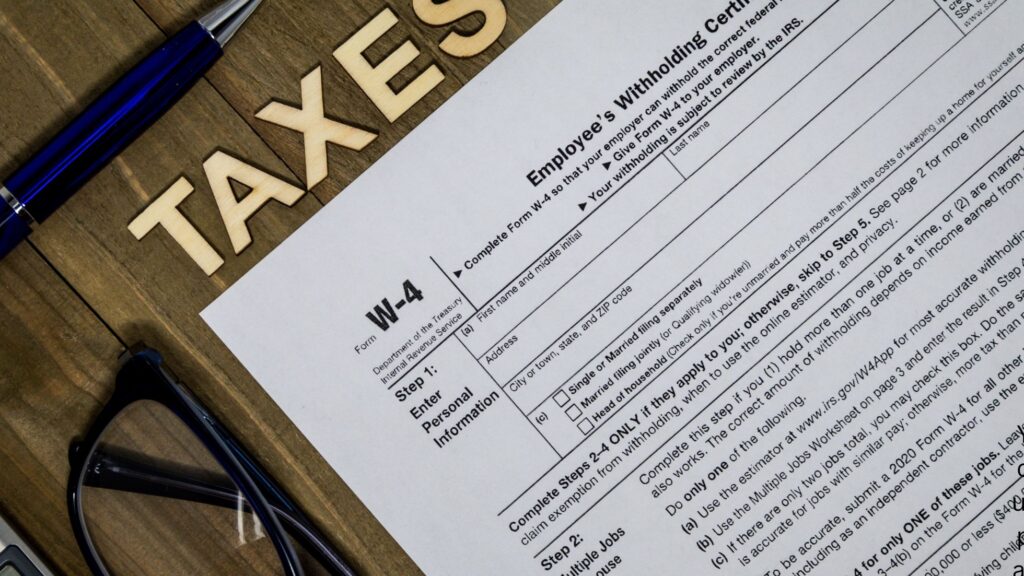Nigeria’s new tax laws have brought stamp duties back into the spotlight. What was once a dusty colonial relic visible only on old contracts and receipts is now a modernized, digital-age tax that affects almost every business transaction you document.
Whether you’re signing a rental agreement, taking out a loan, buying shares, or even executing contracts online, stamp duty now applies more broadly than ever before. The good news is that the rules are clearer, the rates are standardized, and you can even pay digitally.

What Exactly Gets Taxed?
The fundamental principle remains unchanged in the new Tax Act, 2025 signed into law by President Tinubu: stamp duty applies to written documents that record transactions, not the transactions themselves. Think of it as a tax on the paperwork that makes your agreements legally binding.
The law targets what it calls “chargeable instruments” or any document that’s signed, sealed, or otherwise made binding in connection with a taxable transaction. This includes contracts and agreements of all types, lease agreements for property, loan and mortgage documents, bills of exchange and promissory notes, share transfer forms and settlement deeds or partnership agreements.
The key insight is that if you create a document intended to have legal effect that records an obligation, right, or transfer of value, it likely attracts stamp duty. The 2025 Act expands this reach by explicitly including electronic documents and harmonizing rates across multiple categories.
Digital Contracts Are Now Fully Covered
One of the most significant changes is the explicit recognition of digital instruments. Contracts executed electronically through email, electronic signatures, or digital platforms are now treated exactly like paper documents for stamp duty purposes.
This means that PDF contract you signed online, the digital loan agreement you executed through your bank’s app, or even the electronic share transfer you completed through your broker all qualify as chargeable instruments. The government’s reasoning is that just because a document never exists on paper doesn’t mean it escapes tax. The Federal Inland Revenue Service (FIRS) has been empowered to validate and verify electronically stamped documents through digital systems.
Common Scenarios and What They Cost
The application of stamp duty often feels abstract, that is, until you see it in action. Here are the most common situations under the new law:
- Bills of exchange and promissory notes attract a flat fee per document, not a percentage.
- Loan and mortgage agreements are charged as a percentage of the principal amount, whether secured or unsecured.
- Property leases are taxed based on the lease term and annual rent. However, longer leases attract higher rates.
- Share transfers attract duty typically around 0.75% of the transaction value (or market value if no consideration is paid).
The guiding rule is that the party who benefits most from the document’s legal enforceability bears the duty.
Consider Adaora, who signs a three-year lease for her boutique in Lagos with annual rent of ₦2 million. Her lease agreement attracts stamp duty calculated on both the lease term and total rent value. She pays this within 30 days of signing to ensure her lease is legally enforceable.
Emeka takes out a ₦50 million mortgage to buy a house in Abuja. His mortgage agreement attracts stamp duty calculated as a percentage of the ₦50 million principal amount. His bank typically handles this payment as part of the loan processing, but Emeka should verify this to avoid penalties.
Kemi buys ₦10 million worth of shares in a Nigerian company through her broker. The share transfer form attracts stamp duty at the prescribed rate, typically around 0.75% of the purchase price. Her broker should handle this payment, but Kemi remains ultimately responsible for ensuring compliance.
Exemptions and Zero-Rated Instruments
The law retains a set of targeted exemptions to avoid burdening smaller transactions or socially beneficial activities. These include:
- Receipts below specified thresholds
- Certain government or inter-agency agreements
- Instruments executed by registered charitable organizations
However, exemption does not eliminate the need for stamping. Even zero-rated instruments must be presented for stamping and marked as exempt to avoid penalties. The principle is procedural: every instrument must enter the system, even if no duty is owed. Failure to present a document within the required period — usually 30 days — can attract penalties, regardless of exemption status.
How to Calculate and Pay
The 2025 Act maintains two main calculation approaches:
- Ad valorem method — for documents tied to a monetary value, like loans, leases, or share transfers.
- Flat-rate method — for simple instruments like cheques and promissory notes.
The rates vary significantly by instrument type. Share transfers typically attract around 0.75%, while loan agreements might be charged at 0.375%. Leases use graduated rates depending on the term length and annual rent.
Payment responsibility depends on the transaction type. The Federal Inland Revenue Service handles corporate instruments and interstate transactions, while State Internal Revenue Services (SIRS) manage property leases and similar local transactions.
Once payment is made, the document receives a stamp either physically or electronically as evidence of compliance. This stamping is essential because unstamped documents may not be admissible in legal proceedings.
Timing Is Critical
The law typically requires payment within 30 days of document execution to avoid penalties. This timing is crucial because late payment can result in both financial penalties and potential legal complications if you need to enforce the document later.
Common Questions and Practical Answers
Does every small transaction attract duty?
Technically yes, but thresholds exist. De minimis exemptions apply to small-value receipts or minimal contracts.
Who bears the cost?
Usually, the person who benefits from the instrument’s enforceability, which is in most cases, the borrower, tenant, or purchaser.
Are online documents automatically compliant?
No. Even digital contracts must be submitted for electronic stamping through the approved FIRS or SIRS portals. The system verifies payment and issues an e-stamp certificate, legally equivalent to a physical stamp.
How Taxpal Can Help with Stamp Duty Compliance
The new Tax Act enters into effect on January 1, 2026.
Managing stamp duty obligations across multiple transactions and document types can be complex, especially for businesses with high transaction volumes. Taxpal provides comprehensive stamp duty support. Our services includes transaction analysis to identify stampable documents, automated calculation of duty amounts based on current rates, digital payment processing through authorized channels, compliance monitoring to ensure timely payment and documentation management for audit purposes.
Visit our website to choose between consultations or portal access, and let us help you navigate stamp duty requirements efficiently. Whether you’re handling occasional transactions or managing ongoing compliance, we’ll ensure your documents are properly stamped and legally protected.












